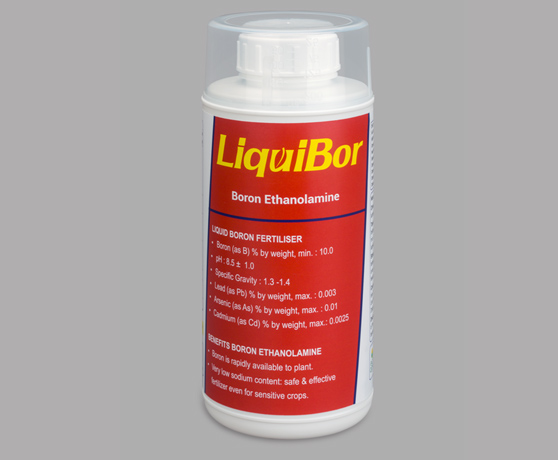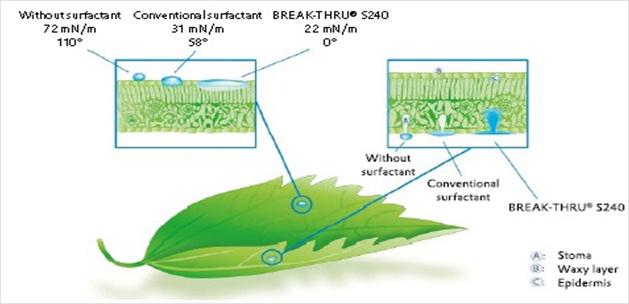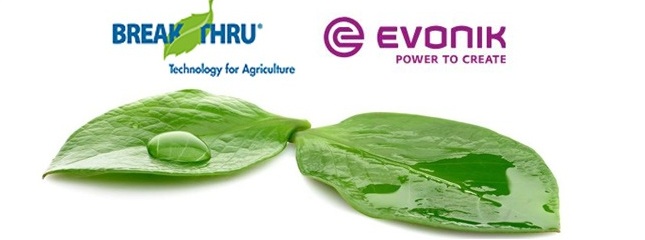


-
INTRODUCTION
BREAK-THRU S240 is a non–ionic surfactant that belongs to chemical class "Organo-modified trisiloxanes", which has phenomenonal activity of "Super Spreading" (i.e. the rapid coverage of hydrophobic surfaces such as leaves at concentrations of 0.1% or less). Aqueous solutions with BREAK-THRU S240 have zero contact angle (Figure 1)
-
Super spreading is due to dramatic lowering of surface tension of water. Pesticides or foliar fertilizer Sprays containing BREAK-THRU S240 are very effective due to:
-
1 - Wetting Action : Complete wetting of treated foliage
2 - Targeting Effect : Allowing the spray to reach locations that are not accessible
3 - Stomatal Flooding (Penetrating action): Better uptake through the waxy layer of leaves i.e. by Cuticular Penetration and by entering stomatal pores

MORE DETAILS
- BREAK-THRU S240 allows a larger amount of active ingredient (Systemic Insecticides/ /Fungicides/ Weedicides) to enter the plant
- BREAK-THRU S240 provides rain-fastness within one hour.
- BREAK-THRU S240 permits the reduction of spray volumes up to 30%, which Saves time, money, and environmental resources.
- BREAK-THRU S240 safeguards the performance of pesticides and foliar fertilizers under unfavorable conditions such as:
- Hot and dry conditions.
- Mature and hardened weeds species.
- Dust covered crops.
- After a cold period when the waxy layer of plants is thicker.
- When plants have a limited surface e.g. spikes.
- When complete coverage is necessary e.g. within Rose petals.
- For Contact Pesticides: 50 ml/ Acre.
- For Systemic Pesticides: 80 ml/Acre.
- For Soil application: 100 ml/Acre


